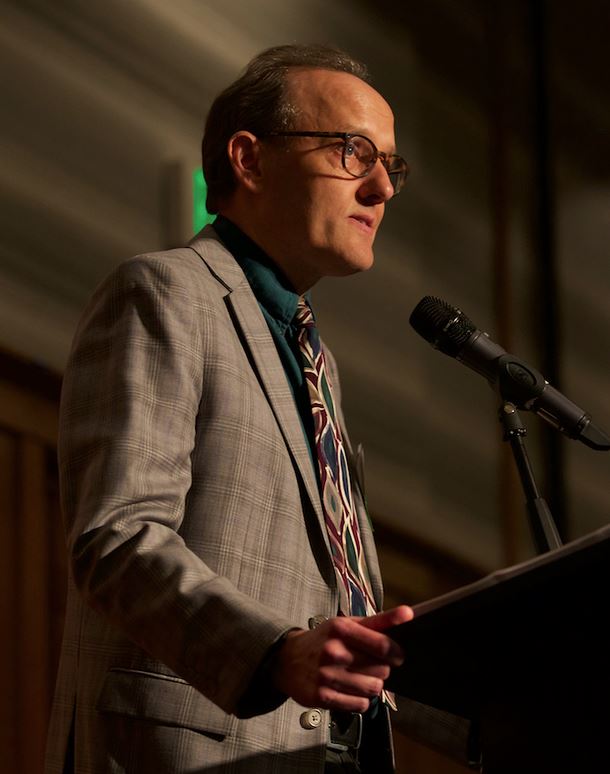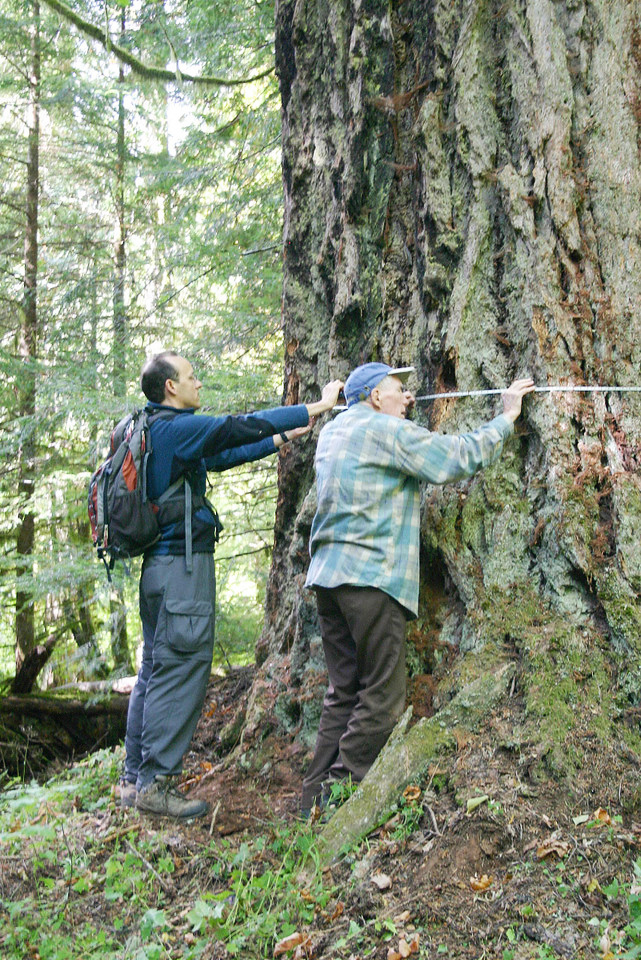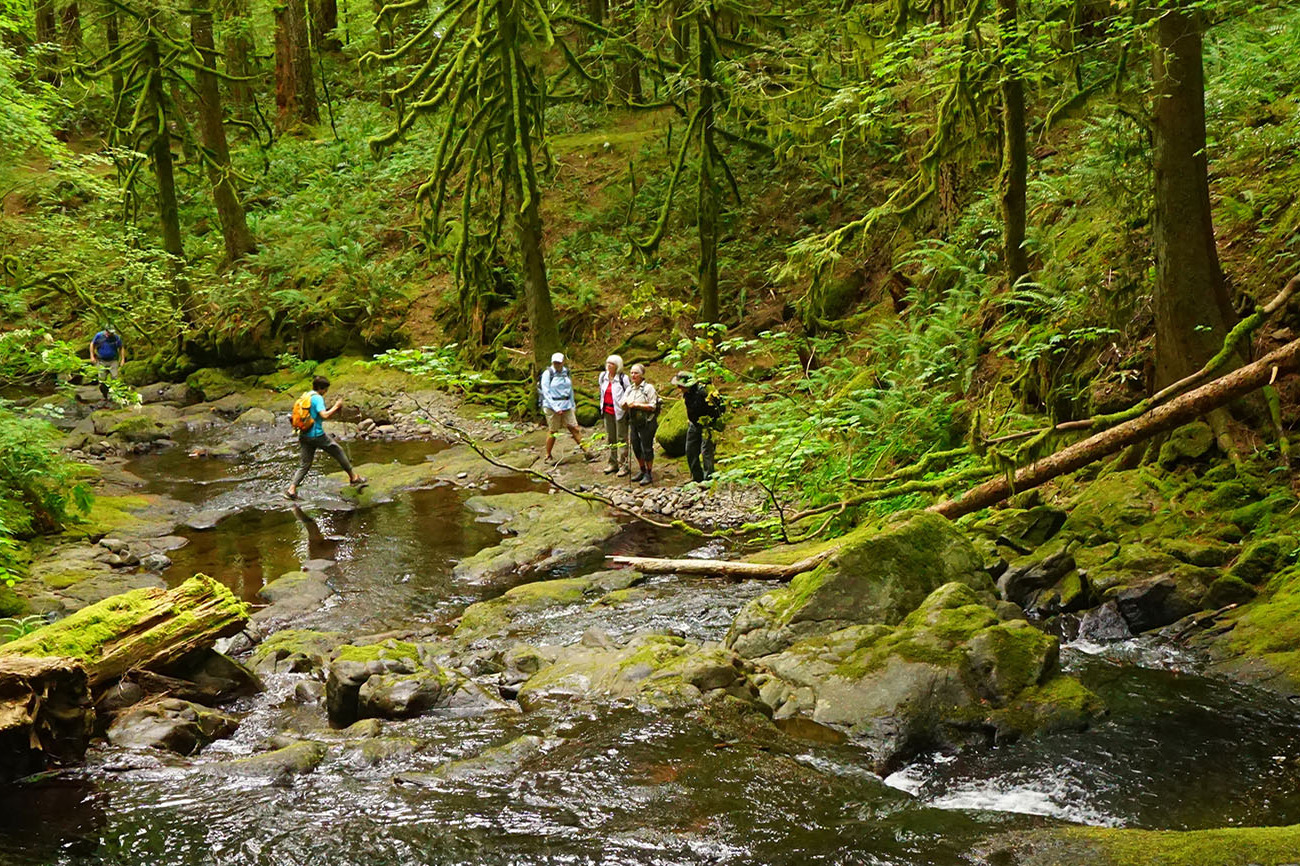 By Kevin Gorman
By Kevin Gorman
Executive Director
Nearly twenty years ago, when I was just starting as the executive director of Friends of the Columbia Gorge, I had the opportunity to hike with author and noted wildflower expert Russ Jolley. Though Russ was in his seventies, he was a rock star of our Gorge hiking program and I felt lucky to have him to myself that day. As we hiked, I kept thinking about something I had read in his Gorge wildflowers book. He wrote that the forests around Multnomah Falls were considered silver fir forests, yet as we walked along the trail the forest was thick with Douglas firs. I was flummoxed. Where are the silver firs, I asked.
 Russ gave me a knowing smile and said that if this forest ever reached its mature stage, the silver firs would take over. He explained how silver firs can grow, take hold in an old-growth forest and then wait…that’s right, wait, stop growing and bide their time for the older trees to topple over and create daylight, sometimes waiting decades for their opportunity to flourish. It was revelation to me that the final stage of old-growth forests in the western Gorge would not be dominated by Oregon’s state tree; it would instead be filled by another type of tree I couldn't even see.
Russ gave me a knowing smile and said that if this forest ever reached its mature stage, the silver firs would take over. He explained how silver firs can grow, take hold in an old-growth forest and then wait…that’s right, wait, stop growing and bide their time for the older trees to topple over and create daylight, sometimes waiting decades for their opportunity to flourish. It was revelation to me that the final stage of old-growth forests in the western Gorge would not be dominated by Oregon’s state tree; it would instead be filled by another type of tree I couldn't even see.
As we come to final stage of our Preserve the Wonder campaign, I've found myself thinking often of Russ and his wisdom about the silver fir and change. We first publicly announced the campaign at our 2017 Annual Meeting & Luncheon; at the 2018 annual meeting, held last Sunday, we shared that Friends had crossed the $5 million mark of our $5.5 million campaign to purchase seven properties on the Washington side of the Gorge.
With $500,000 to go, Friends has launched a $250,000 matching gift campaign, meaning if we can raise $250,000 from the public, then two of our donors will match those funds with another $250,000 and complete our campaign. This is an amazing opportunity to finish off our most ambitious endeavor in our 38-year history. And this push to the finish includes a surprise none of us anticipated: a gift to our land trust of an additional 50-acre forested property donated by one of the landowners of the original seven Preserve the Wonder properties. It's also a remarkable example of how tremendous conservation opportunities, with time and patience, can open up and change the landscape.
An early chance at conserving a special area slips away
Duncan Creek is a magnificent area across the river from Horsetail Falls that I first learned of through Russ, who in turn had learned of the property through a man named Vern Good. Vern and his wife Virginia had owned the land for decades. Vern was what you would call a light-touch forester. He harvested trees, but his land always felt more natural than managed. Vern passed away in the 1990s; in 2000 his family offered their 365 acres to the U.S. Forest Service for purchase. The Forest Service ranked the acquisition a high priority even though the value was over $4 million.
Friends of the Columbia Gorge was still years away from creating our own land trust, but we understood the importance of public land acquisition and hired former U.S. Sen. Slade Gorton to lobby the new Republican administration. With hard work and luck, we convinced the White House and Senate in 2002 to approve $10 million for Gorge land acquisition, but fate intervened, political winds changed and the Forest Service was ultimately unable to purchase the Good property.
In 2006, shortly after we announced the creation of the Friends of the Columbia Gorge Land Trust, Vern’s son called us again. We knew we couldn’t afford the entire property, but we were interested in discussing the most significant segments of the property. The westernmost part of the property was a canyon area that Duncan Creek ran through. It is a spectacular natural area but we were told that Vern’s daughter cared deeply about the river land and wouldn't want it sold. The northernmost section was also intriguing to us as it was a missing link of a public-land corridor between Cape Horn and Beacon Rock. But we could never quite come to an overall agreement.
Vern’s son was clear that his mother was in failing health and the land was in her name. When she passed, a hefty estate tax bill would be due and the family saw only two options: sell the land or log it to pay the taxes. Friends talked with one of its members about buying the land as a conservation buyer but there were too many complications. The clock was ticking and we didn’t have an answer.
Another chance, and a creative solution
Fast forward to early 2016. The pieces of the Preserve the Wonder campaign were falling into place when a voice from the past appeared on my voicemail: Vern Good’s son. When I spoke to him, he told me that his mother had passed away and the tax bill from his mother’s estate would be due in six months. The family had no choice, he said, but to begin logging to pay the taxes unless we were interested in purchasing some part of it. He was blunt: Could Friends come up with the funds that quickly? My answer was an unflinching “Yes.”
My certainty came from a phone call a few weeks before. I was returning from spring break with my family when I received a call from one of our most generous and dedicated donors. She had known that we were considering buying several properties and wanted to help get the Preserve the Wonder effort off the ground. As I talked about various ways, large and small, to help our campaign, she stopped me and said, “Kevin, I’m talking about a million-dollar gift.” I’ve been fortunate enough to be on the receiving end of this type of conversation a couple of times and I can’t tell you the power it has to stiffen the spine, clear the horizon and convince the staff and board that yes, we can do this. In that moment, Preserve the Wonder became real and the awesome responsibility to raise millions more was ours.
 But if money wasn’t an obstacle for Duncan Creek, than transfer of ownership was. Since we weren’t buying the entire property, our land trust and the Good family would need to go through a boundary line adjustment process, something that would extend well beyond their six-month window when the estate tax would be due. There was no work around or shortcut. Once again, it seemed that we would be stymied in protecting this property by forces beyond our control. But then one of our land trustees proposed a creative idea: If Friends can’t buy the land, why don’t we buy the trees?
But if money wasn’t an obstacle for Duncan Creek, than transfer of ownership was. Since we weren’t buying the entire property, our land trust and the Good family would need to go through a boundary line adjustment process, something that would extend well beyond their six-month window when the estate tax would be due. There was no work around or shortcut. Once again, it seemed that we would be stymied in protecting this property by forces beyond our control. But then one of our land trustees proposed a creative idea: If Friends can’t buy the land, why don’t we buy the trees?
The timber rights represented 80 percent of the land value, more than enough to deal with the estate taxes the family would incur. We could then go through the boundary line adjustment and later buy the underlying land, which exactly what we did.
The campaign inspires another gift
The final chapter of Duncan Creek came a few months ago when I received a call from Vern’s daughter, who lives in the Seattle area. She told me she now owned the river section entirely and wanted to know if our land trust was interested in purchasing it. I told her that we were of course interested in the property, but that we were in the final stages of raising money for our Preserve the Wonder properties and couldn’t extend ourselves any more.
She asked about the campaign and told me that she was also very active with her local land trust. I sent her a link to our Duncan Creek video and encouraged her to watch it. She said that she hadn’t seen the property in over 30 years and was eager to see it. She called back a few weeks later and said she wanted to donate the river section to our land trust; her sole requests were that the land never be logged and we name it Good's Woods, in honor of her late parents. I was touched and told her we would.
How you can help get Preserve the Wonder over the finish line
So as we enter the homestretch with our $250,000 matching campaign to finish the Preserve the Wonder campaign I can't help but think back to lessons I learned from Russ on the trail two decades ago. The opportunity for Friends to purchase and permanently protect over 400 acres of land on the Washington side of the Gorge is something I would never dreamed of in 1999. And the leadership, generosity and vision of the many donors and supporters – such as the Good family – that we have encountered over the course of this campaign has been beyond what I ever could have imagined. But to finish this last stretch we're going to need your help.
It’s super easy to donate and gifts large and small are greatly appreciated. It is an opportunity to be part of a campaign that started out with a goal to save seven properties and ended up saving eight. The eighth came only after twenty years of patient determination and now the beautiful Doug fir forest on the lands of Good's Woods may one day be filled with silver firs reaching skyward.
(Photos: Kevin Gorman and Russ Jolley measure a Douglas fir, 1999 - courtesy of Kevin Gorman; Trees at Duncan Creek - photo by Debbie Asakawa)

